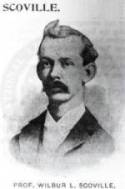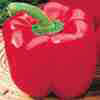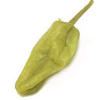There are a great variety of chiles available today. They range from the mildest bell pepper to the extremely hot Red Savina Habanero. The heat level of chiles is measured in Scoville units. What are Scoville units you may ask? In 1912 Wilbur Scoville was a chemist working for the Parke-Davis pharmaceutical company. He developed a method to test the heat intesity of chiles called the Scoville Organoleptic Test. It was a subjective test where panelists were given a mixture of chile powder and sugar water. They sipped the solution in increasingly dilluted concentrations until it no longer burned their mouth's. A number was then given to each chile based on how much it needed to be dilluted before it no longer burned the tester's mouth (Nearman, 2004). Of course, this is not a very accurate test since people have different tolerance levels to spicy foods.
Today, the heat intesity of chiles is measured with a more scientific method called High Performance Liquid Chromatography. This procedure measures the actual Capsaicin levels in the chiles. Capsaicin is the chemical compound which gives chiles their hot flavor. The unit of measure used in the new procedure is still called the Scoville unit (Nearman, 2004).

















